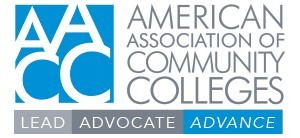Appalachia has a higher percentage of working-age adults with an associate degree but no bachelor’s degree than the national average, according to a new federal report that examines trends in the Appalachia region. In 2016-20, 10.2% of adults ages 25 to 64 in Appalachia had an associate degree but not a baccalaureate, compared to 9.3% nationally, shows […]
DataPoints: ATE in action
DataPoints: ATE in action The National Science Foundation’s Advanced Technological Education (ATE) program awards grants to support a wide variety of efforts to improve technician education at public two-year colleges in fields ranging from advanced manufacturing and engineering, to nanotechnology and biotechnology, to agriculture and environmental sciences, and more. The program supports curriculum development, professional […]
DataPoints: Student supports in recruiting, enrolling and retaining
Increasing enrollment (87%) and retention rates (78%) remain top-tier concerns for community college leaders, according to a new report based on a fall 2021 survey of two-year college officials. Increasing graduation rates (59%) was third, followed by reducing equity gaps (57%) and re-engaging lapsed students (52%). Seven in 10 survey participants said that holistic student support was […]
DataPoints: The community college baccalaureate landscape
Nearly half of all states (24) have authorized at least some community colleges to confer bachelor’s degrees, according to a recent analysis by New America. The heaviest concentration of those states are in the West, with 15 of the states located west of the Mississippi River. Early adopters such as Georgia, Washington and Florida have […]
DataPoints: Education, income and poverty
From 2019 to 2020, real median incomes among U.S. householders ages 25 and older dropped for all educational attainment groups, according to a recent report from the U.S. Census Bureau, whose collected information coincided with the Covid pandemic. Individuals with less education (who also earned the least) were hit particularly hard. Those with no high […]
DataPoints: More education, more earnings, but….
In general, the higher the degree earned, the higher the earnings. For example, an associate degree increases lifetime earnings over a high school diploma by 25%, according to a new report from the Georgetown University Center on Education and the Workforce. Two-year degree holders earn a median of $2 million during their lifetimes, averaging $50,000 […]
DataPoints: Immigrants and credentialing
Community colleges can tap into the first and second generation of immigrants, which can potentially increase their college completion. Read the full PDF.
DataPoints: Variance in median earnings
Earnings increase with education levels, but they also increase based on the selected discipline. Read the full PDF.
DataPoints: For certificates, it’s community colleges
Older students are more likely to earn certificates at community colleges than traditional-age students. Read the full PDF.
DataPoints: Adult workers and postsecondary credentials
Nearly 60 percent of adult workers have some postsecondary credential. Among credentialed workers with no degree, 43 percent have a postsecondary certificate. Read the full PDF.
